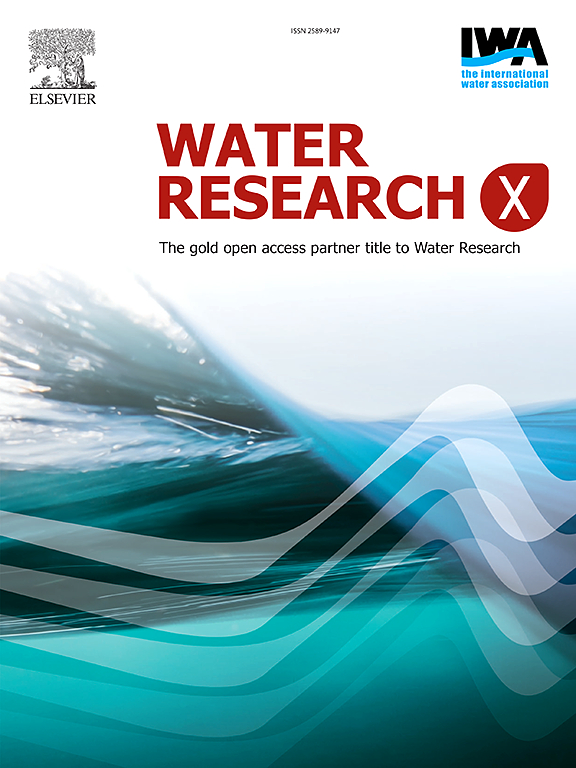Coarse bubble mixing in anoxic zone greatly stimulates nitrous oxide emissions from biological nitrogen removal process
IF 7.2
2区 环境科学与生态学
Q1 ENGINEERING, ENVIRONMENTAL
引用次数: 0
Abstract
The biological nitrogen removal process in wastewater treatment inevitably produces nitrous oxide (N2O), a potent greenhouse gas. Coarse bubble mixing is widely employed in wastewater treatment processes to mix anoxic tanks; however, its impacts on N2O emissions are rarely reported. This study investigates the effects of coarse bubble mixing on N2O emissions in a pilot-scale mainstream nitrite shunt reactor over a 50-day steady-state period. Online and offline N2O monitoring campaigns show that coarse bubble mixing in the anoxic zones significantly elevates N2O emissions, yielding an extremely high emission factor of 15.5 ± 3.5 %. Intensive sampling and isotopic analyses suggest that the elevated emissions are primarily due to the inhibition of the N2O denitrification process by oxygen in the anoxic phase introduced by coarse bubbling. Substituting coarse bubble mixing with submersible pump mixing resulted in a substantial reduction of N2O emissions, decreasing the emission factor by an order of magnitude to 1.2 ± 0.8 %. The findings reveal that a previously overlooked factor, coarse bubble mixing, can significantly stimulate N2O emissions. The use of coarse bubble mixing in anoxic tanks of biological nitrogen removal warrants caution.
缺氧区的粗大气泡混合大大刺激了生物脱氮过程中的氧化亚氮排放
废水处理中的生物脱氮过程不可避免地会产生一氧化二氮(N2O),这是一种强烈的温室气体。废水处理过程中广泛采用粗泡混合来混合缺氧池,但其对氧化亚氮排放的影响却鲜有报道。本研究调查了在一个中试规模的主流亚硝酸盐分流反应器中,粗泡混合在 50 天稳态期间对 N2O 排放的影响。在线和离线 N2O 监测活动表明,缺氧区的粗大气泡混合显著提高了 N2O 排放量,排放系数高达 15.5 ± 3.5 %。大量取样和同位素分析表明,排放量增加的主要原因是粗大气泡引入的缺氧相中的氧气抑制了一氧化二氮的脱硝过程。用潜水泵混合代替粗气泡混合后,N2O 排放量大幅减少,排放系数降低了一个数量级,为 1.2 ± 0.8 %。研究结果表明,粗气泡混合这一以前被忽视的因素会大大刺激一氧化二氮的排放。在生物脱氮的缺氧池中使用粗气泡混合值得警惕。
本文章由计算机程序翻译,如有差异,请以英文原文为准。
求助全文
约1分钟内获得全文
求助全文
来源期刊

Water Research X
Environmental Science-Water Science and Technology
CiteScore
12.30
自引率
1.30%
发文量
19
期刊介绍:
Water Research X is a sister journal of Water Research, which follows a Gold Open Access model. It focuses on publishing concise, letter-style research papers, visionary perspectives and editorials, as well as mini-reviews on emerging topics. The Journal invites contributions from researchers worldwide on various aspects of the science and technology related to the human impact on the water cycle, water quality, and its global management.
 求助内容:
求助内容: 应助结果提醒方式:
应助结果提醒方式:


